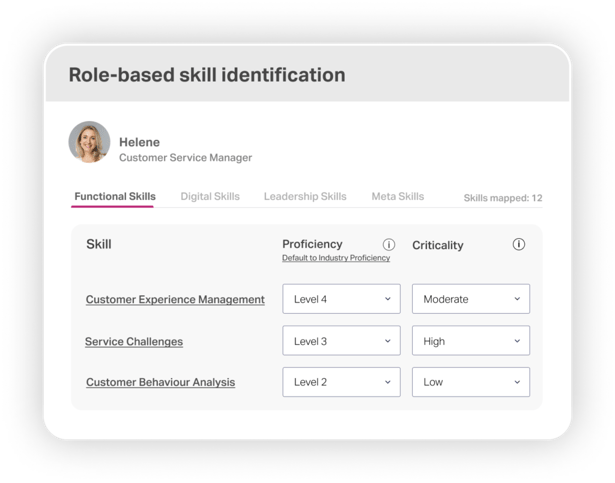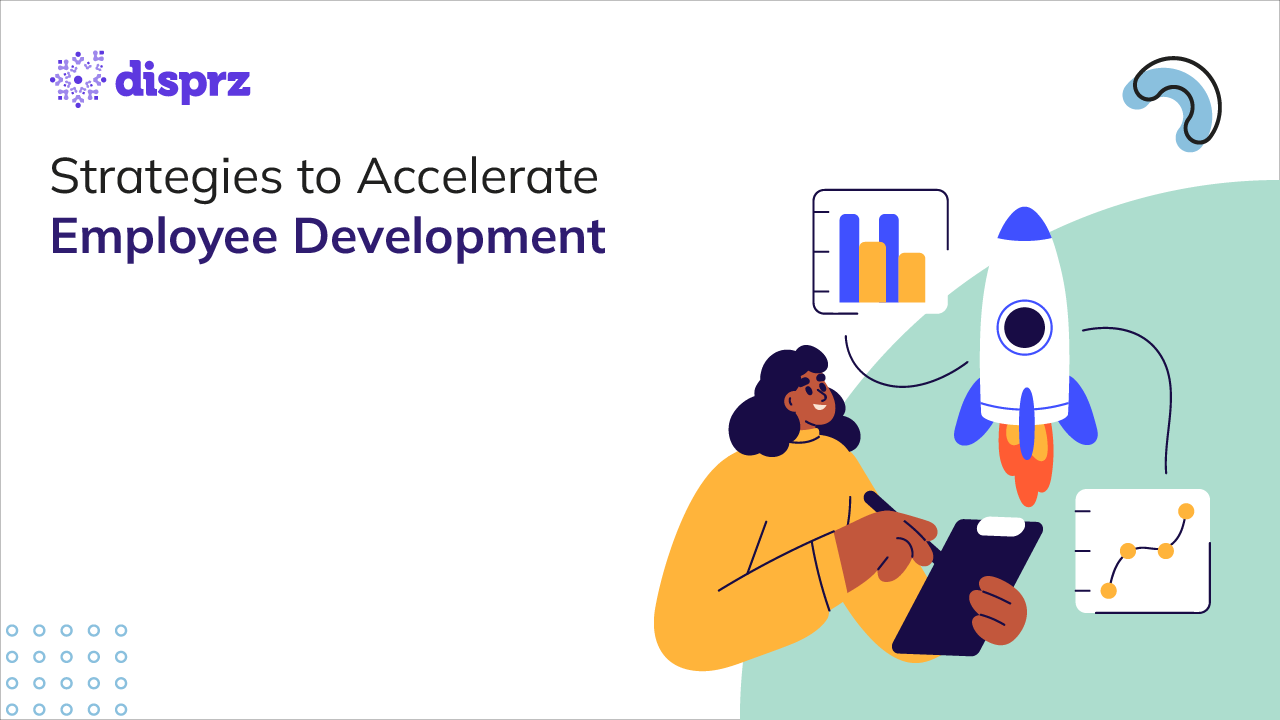Effective learning strategies play a significant role in providing upskilling, reskilling, and cross-skilling opportunities for continuous employee development. The growth of employees has become more important than ever with digital advancements and market volatility. Employees need to acquire new skills continuously to be more agile in their roles.
55% say they need additional training to perform better in their roles. Forbes – Why Learning And Development Is Now A Competitive Differentiator
Corporate learning programs need to evolve to address the changing needs of the workplace and your industry. Without the most current skills, you can lag behind in the market. Therefore, it is essential to level up your learning strategies to equip the employees with skills that will allow your firm to successfully compete.
What is a learning and development strategy?
One of the foremost challenges confronting businesses in the year 2024 is the shortage of skills. Companies are redefining the work experience to gain a competitive edge over rivals. For example, they are incorporating flexibility, a four-day workweek, and appealing opportunities for learning and development into their value proposition.
Organizations utilize L&D strategies to enhance the knowledge, skills, and capacities of their workforce through corporate training and other educational programs.
As an organizational plan, it should be cost-effective, time-relevant, add value for the stakeholders, and align with the business strategy.
The role of HR in learning & development
Generally, HR is in charge of L&D programs, especially in smaller businesses. Larger companies, however, will assign responsibility for these tasks to an L&D department. Employee collaboration between HR and L&D is crucial in these situations to prevent misunderstandings or duplication of effort when:
-
Determining the qualifications required to hire new employees
-
Retraining and upskilling current employees in preparation for internal hiring and promotion chances
-
Managing the performance of underachievers
For instance, implementing managerial training for current employees is one way that succession planning, assisted by an HR manager, might integrate L&D activities.
Additionally, HR specialists are in charge of the subsequent L&D projects:
Create and carry out learning and development initiatives to assist the whole employee life cycle. This covers management and leadership development, career development, succession planning, and onboarding.
Assess the success of L&D programs and make necessary modifications based on worker performance.
5 strategies to accelerate employee learning and development
The success of the employee skills development process depends on the learning strategies you build. Re-examine your training and development strategies and put a structure in place that’s aligned with the business goals.
1) Set learning objectives aligned with business goals
It is pivotal to set learning objectives to ensure your employee learning and development strategies are on the right track. To ensure your learning objectives are aligned with the business goals, you need to understand and research the firm’s priorities for the year. Once you identify the business goals, set SMART goals for your learning initiatives. Your goals must be:
-
Specific
-
Measurable
-
Achievable
-
Relevant
-
Timely
2) Build an impactful upskilling program
With careful planning, you can prepare to tackle any hurdle that may get in the way of developing effective development programs and gives you the foresight to lead employee learning in the right direction.
Here are a few points to consider for developing a successful corporate learning program.
-
Connect with functional leaders and discuss employee improvement areas.
-
Develop a skill inventory by mapping essential skills for specific job roles.
-
Consider past learning strategies and eliminate what didn’t work.
-
Interact with managers to understand their team members’ career aspirations.
- Develop a 4-S skilling cycle. It is a skilling process that consists of skill identification, skill assessment, skill building, and skill impact. Following these four simple steps, you can easily conduct end-to-end skilling for total employee development.
3) Leverage AI-powered technology for skill-driven learning
Having the right AI-powered technology to assist in planning and executing your corporate learning strategies is a critically important piece of any successful learning framework. It can manage your employees’ entire lifecycle, from onboarding to preparing the employee for excelling in the role through continuous skill development. You can drive personalized learning at scale to capture employees’ interest.

By leveraging AI-powered learning technology, you can:
-
Identify the right skills, assess the gap, build a skilling process, and measure its impact
-
Create a role-based personalized skilling journey to engage employees
-
Streamline the learning content for all your teams in one consolidated repository.
-
AI-driven technology will provide content recommendations based on the required skills.
-
Evaluate procured knowledge through various subjective and objective assessments.
-
With an intuitive analytics dashboard, view learning outcomes & metrics to measure the impact on job performance and on business outcomes.
-
Generate a personally tailored roadmap of lateral and vertical career paths to compare role readiness for potential roles.
4) Accelerate learning with high-quality L&D content
Content is king, but context ensures the success of corporate learning and development programs. Hence L&D leaders need to strategize, manage, and execute it effectively.
Here are a few points you should consider to strategize and develop or integrate quality content.
-
Conduct a “needs” analysis to understand what type of content different teams will require.
-
Determine whether you will curate or create content
-
Opt for AI-powered technology that integrates with various content providers.
-
Create targeted learner profiles and define their content requirements.
-
Shortlist sites from where you want to curate content.
-
Tailor content to the individual, job roles, and learning preferences.
-
Determine the formats in which you will present your content, like a blog, video, podcast, etc., or merge them to create a cohesive content journey.
-
Use visually appealing elements like images, flashcards, and infographics to make the content engaging.
-
Regularly assess, identify, and mitigate scrap content that’s not consumed or applied to work or that would not be beneficial to the learners to achieve their end goals.
5) Embrace the power of learning analytics
It is crucial to measure and analyze your learning programs to track the effectiveness of learning strategies.
With the help of the right AI-powered learning technology, you can garner critical analytics to continuously improve your corporate learning program:
-
Track learning metrics such as total learning hours, number of assessments currently running, average completion rate, number of active learning journeys, etc.
-
Determine if employees are engaging with the learning modules.
-
Track the overall completion status of learning journeys and their assessment score.
-
Calculate the average skill score through the manager and self-assessment.
-
Measure improvements in benchmarked skills by role or for your entire organization.
-
Monitor each phase of the skilling cycle to determine what’s working and what needs to be enhanced in the learning and development process.
What influences an L&D strategy?
Two main factors influence the L&D strategy, which in turn are the starting point for the strategy.
They are
Business Goals or Strategic Direction
Base your L&D strategy on the company's strategic direction and goals, incorporating both internal (e.g., past performance) and external (e.g., market conditions) contexts. Examples may involve shifts like new product focus, updated business models, R&D emphasis, operational expansion, and addressing skill gaps. These changes may be organization-wide or department-specific. Align employee development programs and reskilling initiatives with your business's strategic direction to determine investment levels and employee engagement requirements.
Existing Operational Factors
Evaluate existing operational factors like workplace culture and learning ecosystems to gauge their compatibility with new L&D plans. Assess factors such as leadership expectations, budget availability, desired timelines, existing L&D technology, resource availability, potential outsourcing needs, employee learning appetite, and integration with workflows. Adjust L&D strategies accordingly to ensure seamless alignment with operational realities.
Leverage an AI-powered LXP to support your learning strategies
Building impactful learning strategies is not enough. You need the right AI-powered LXP to implement them. Technology such as Disprz LXP enables you to effectively incorporate learning strategies with its advanced personalization and outcome-based Workforce analytics features.
This is how an LXP can support your learning strategies:
-
Manage the entire 4-S skilling cycle with an LXP.
-
Create a skills repository by identifying, benchmarking, and assessing technical skills. It helps you determine if your team has the right technical skills for every role.
-
Assess the proficiency level in each skill to determine job readiness through the manager and self-assessment.
-
Discover skill gaps at a glance for your entire organization.
-
Create blended learning pathways to drive engagement by merging conventional instructor-led learning with a modern asynchronous learning model.
-
Measure and display L&D insights to analyze the impact of learning strategies on employee turnover, engagement, productivity, and on business performance and revenue.
Disprz LXP can simplify the entire process of putting your learning into action to achieve desired outcomes. Check out how Disprz LXP can help by requesting a demo.








